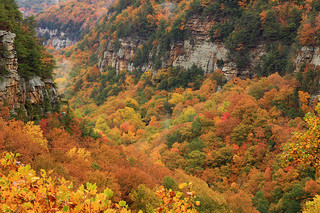Southern Forests’ Ability to Suck Carbon from Air May be Slowing

Photo by: Alan Cressler
New findings concern a team of U.S. Forest Service scientists who studied data from 40,000 sites in 11 southern states. This study analyzed the carbon accumulation levels of forests in the southern US and what they found was troubling. They discovered a possible reduction in the ability of these forests to absorb carbon. Finding this lack of absorption is concerning due to the fact that carbon dioxide is the main green house causing climate change. This research has recently been published in the journal of Scientific Reports.
Abstract:
Over the past century forest regrowth in Europe and North America expanded forest carbon (C) sinks and offset C emissions but future C accumulation is uncertain. Policy makers need insights into forest C dynamics as they anticipate emissions futures and goals. We used land use and forest inventory data to estimate how forest C dynamics have changed in the southeastern United States and attribute changes to land use, management, and disturbance causes. From 2007-2012, forests yielded a net sink of C because of net land use change (16.48 Tg C yr21 ) and net biomass accumulation (175.4 Tg C yr21 ). Forests disturbed by weather, insect/disease, and fire show dampened yet positive forest C changes (11.56, 11.4, 15.48 Tg C yr21 , respectively). Forest cutting caused net decreases in C (276.7 Tg C yr21 ) but was offset by forest growth (1143.77 Tg C yr21 ). Forest growth rates depend on age or stage of development and projected C stock changes indicate a gradual slowing of carbon accumulation with anticipated forest aging (a reduction of 9.5% over the next five years). Additionally, small shifts in land use transitions consistent with economic futures resulted in a 40.6% decrease in C accumulation.
Read more of their findings here.
Read about the highlights in an article from Inside Climate News here.
